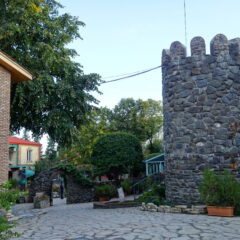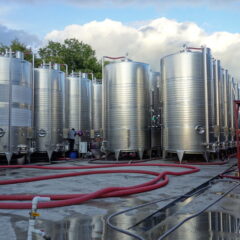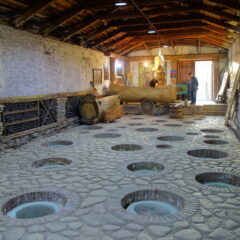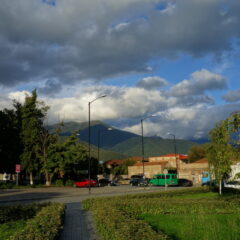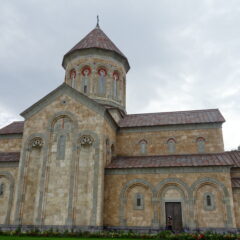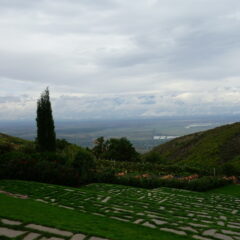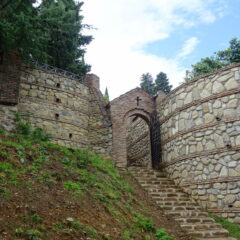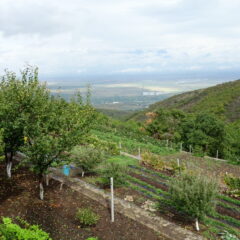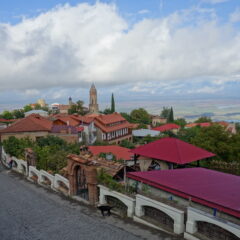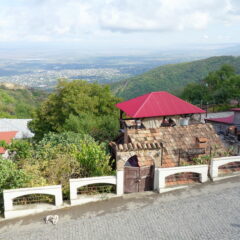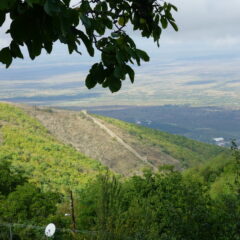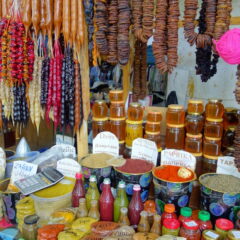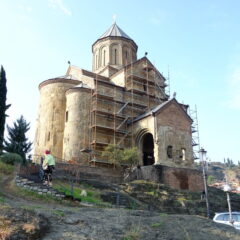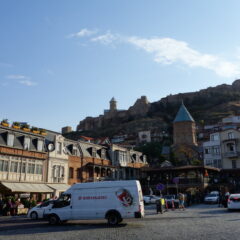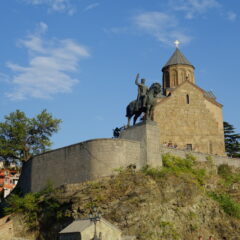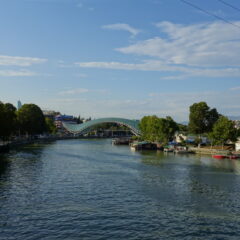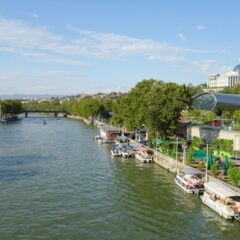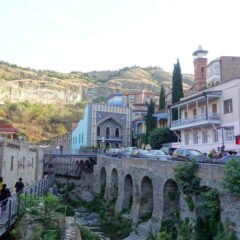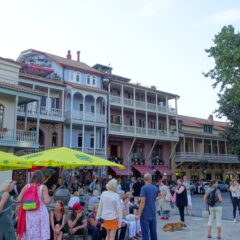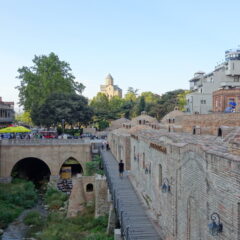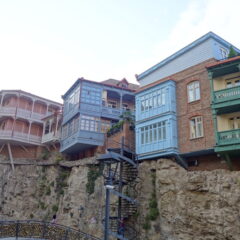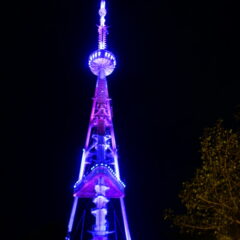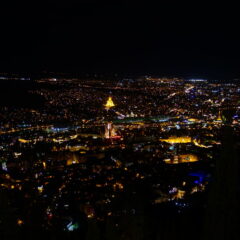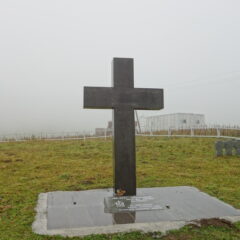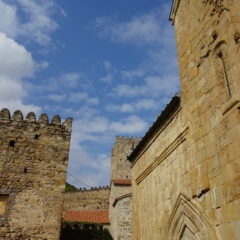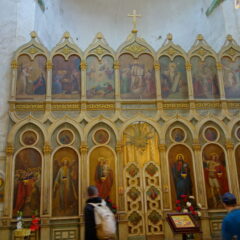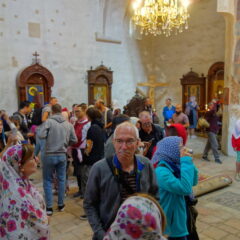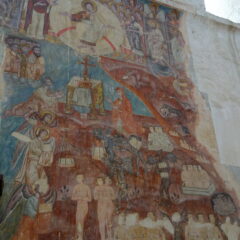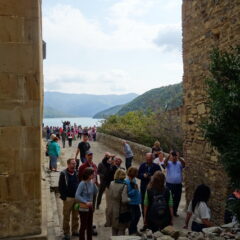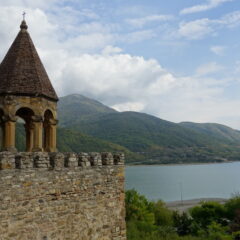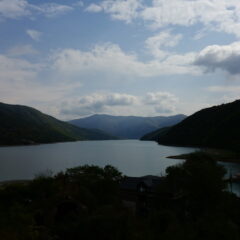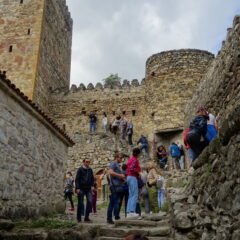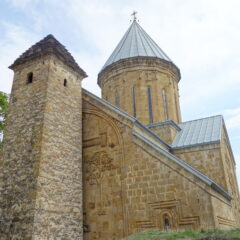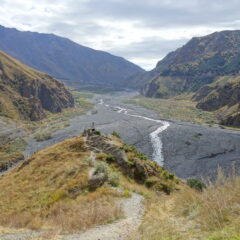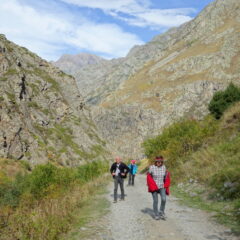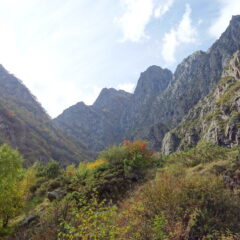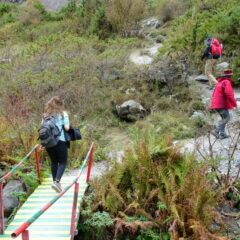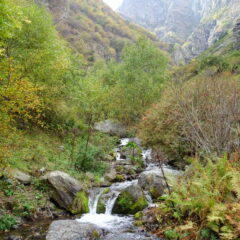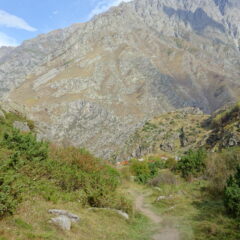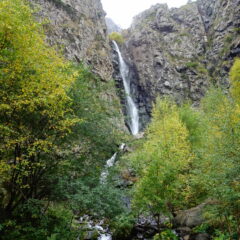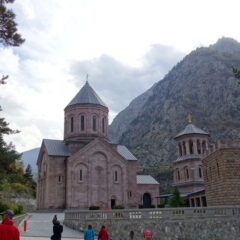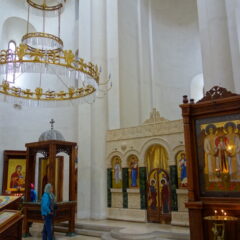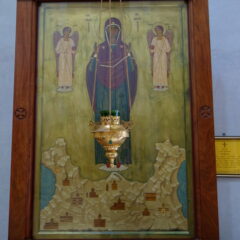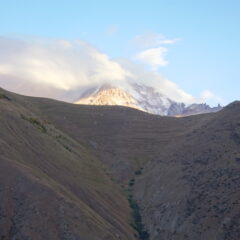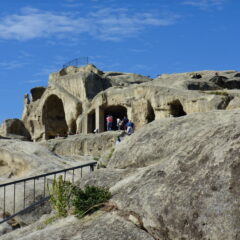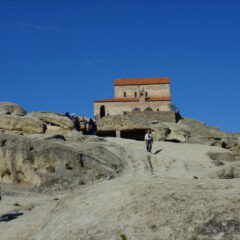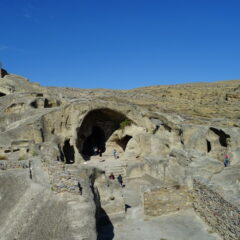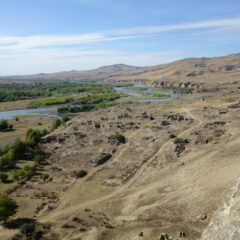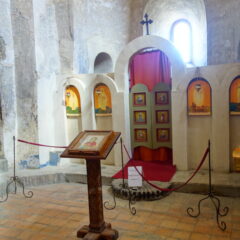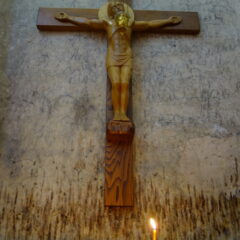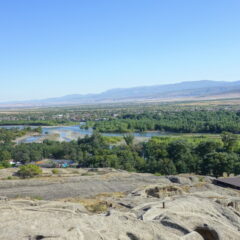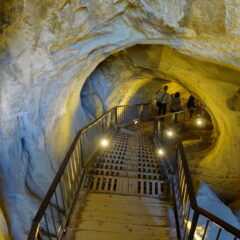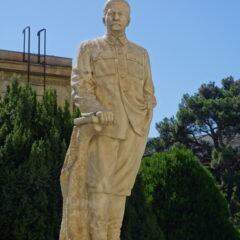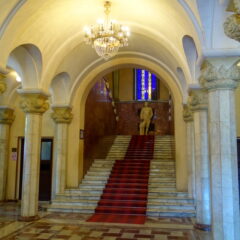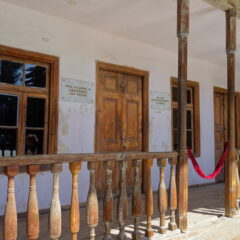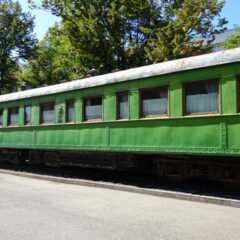We left Tbilisi behind today and continued our trip, now heading for the Kakheti region, Georgia’s main wine region.
The first stop of the day was at the Convent of St. Nino at Bodbe. The convent goes back to the ninth century, though there have been significant changes over the centuries. Today it is a main pilgrimage site in Georgio, due to the relics of St.Nino – Georgia’s national saint – being enshrined here. The convent today is a working nunnery.
Given its significance, the convent was full of tourists and pilgrims. I decided against joining the queue, to see the relics of St.Nino – and instead enjoyed a less spiritual coffee in the cafe next to the convent.
A quick ten minute drive (plus time at a viewpoint) got us into the town of Sighnaghi (სიღნაღი). The town is situated on a hill overlooking the Alazani valley, offering nice views, a nice pedestrian area, some interesting shops and a small market.
Sighnaghi also sits in the middle of wine country, so there are also wine shops and wine bars around … and as we had some time to spend, some of us ended up in one of the wine bars for a bit of a tasting.
In Georgia wine traditionally is produced the kvevri way, which means that the fermentation takes place in a buried and sealed kind of amphora (i.e. the kvevri). Given the process Kvevri wines tend to be harsher and heavier in tannin, they also may have a more distinct color (e.g. white kvevri wines often have a yellow or golden color). Today Georgian wineries typically produce kvevri-style, but also the Western way (i.e. steel tanks, casks).
Well – we were at winery – Pheasant’s Tears Winery – that is specialized in kvevri wines, so had an interesting tasting of some delicious wines.

